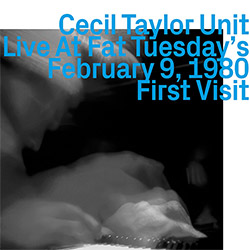
A superb and extended live performance from 1980 at NYC's Fat Tuesday jazz club, from the outstanding sextet of forward-thinking free improvisers, Jimmy Lyons on alto sax, Ramsey Ameen on violin, Alan Silva on double bass & cello, Jerome Cooper on drums & African Balaphone and Sunny Murray on drums, led by Cecil Taylor on piano in an ecstatic concert never previously released.
In Stock
Quantity in Basket: None
Log In to use our Wish List
Shipping Weight: 3.00 units
EU & UK Customers:
Discogs.com can handle your VAT payments
So please order through Discogs
Sample The Album:
Jimmy Lyons-alto saxophone
Ramsey Ameen-violin
Cecil Taylor-piano
Alan Silva-double bass, cello
Jerome Cooper-drums, African Balaphone
Sunny Murray-drums
Click an artist name above to see in-stock items for that artist.
Includes 2 postcards
UPC: 752156010128
Label: ezz-thetics by Hat Hut Records Ltd
Catalog ID: ezz-thetics 101
Squidco Product Code: 34610
Format: CD
Condition: New
Released: 2024
Country: Switzerland
Packaging: Cardboard Gatefold
Recorded live at Fat Tuesday’s, in New York City, New York, on February 9th, 1980, by Peter Kuhn, Harry Baker and Al Vertucci.
"Cecil Taylor frequently used metaphors of architecture and structural design in relation to his musical constructs, acknowledging a familiarity with schematic drawings and architectural plans, and expressing admiration for the likes of Le Corbusier and, in this case, structural engineer Santiago Calatrava in a 2001 Signal to Noise interview. Focusing on Calatrava's radical vision in designing bridges supported by asymmetrical pylons, Taylor added, "If you look at a bridge, you cannot ignore the spatial, rhythmic connotations...." Functionally, the bridge permits access to a broader experience of space, connecting areas separated by an impasse, usually bodies of water.
Adopting Taylor's metaphorical premise to the music of this previously unreleased 1980 performance allows us to combine the structural integrity of the bridge/ensemble (components designed to support and interact in ways which fulfill a concrete/sound objective) with its inherently symbolic nature (as conduit of both expansion of and entry into a heightened sense of personal awareness and possibility), into a musical form which we might identify as "ritual architecture."
Although the commonality of ritual in various cultures often emphasizes a program of systematized, unalterable actions and uniform symbolic content as part of a personal or communal, profane or sacred, ceremony, conflicting interpretations, contested definitions, and an enormous range of stylistic and belief-based variables also suggest that the transformational quality of the process/performance may sanction improvisatory or other unorthodox means of expression, within or without a traditional context. For example, Taylor's (and Jerome Cooper's?) unexpected vocalization towards the end of this performance may not seem to refer to any one specific ritual, yet there are similarities to voices in Japanese Kabuki and Noh dramas, Native American chants (a part of Taylor's own bloodline), the "speaking in tongues" of extreme religious practices, and the "distorted" expressiveness of blues singers like Blind Willie Johnson or Howlin' Wolf.
In the larger sense, however, as this music was dependent upon the ensemble's ability to coordinate their individual, spontaneous details into an eloquent structure (my dictionary defines "architecture" not only as a science, but an art), their familiarity with each other as well as with Taylor's abstracted compositional design was essential. In point of fact, this personnel was one of his most experienced groups: Taylor, Jimmy Lyons (who had been with the pianist since 1961), and violinist Ramsey Ameen (plus trumpeter Raphe Malik, unfortunately not present here, with Sirone on bass and Ronald Shannon Jackson on drums) had recorded two studio and two live sessions just two years earlier; the new rhythm section was actually not new, as Sunny Murray had been a crucial participant between 1960 and '65, and bassist Alan Silva was on the three key Taylor recordings of 1966.
Nevertheless, Taylor's piano is the constant, the foundational presence that determines not only the music's thematic shape and tonal stress (the force exerted by degrees of pressure) but also the perceived spatial environment stimulated by the directional flow of rhythmic energy - a multi-dimensional projection of compression and expansion. The ensemble relationships result from trusting the conceptual structural blueprint (perhaps drawing upon what Hart Crane in his epic poem "The Bridge" characterized as the "telepathy of wires"), thus "solos" are not as such in the conventional sense, but episodes which can be compared to spontaneous modules of improvised material corresponding to the transformational impact of the piano, and derive their individual impulse from the pulsating current of the piano's formal vision. The whole becomes a product of intuitive, collaborative, yet directed methods of construction, as opposed to either rigid terms of organization or free-associative independence.
Ritual evokes internal (spiritual) and external (ceremonial) forces, entertains a choreography of intent (the desire that inspires movement and its consequences) and physicality (think of Jackson Pollock's "dance" above the canvas as he exercises both control and abandon, and the flowing articulation and sheer stamina of Taylor's pianism), seeks transformation through symbolic gestures that affect emotional states. When, in this music, he succeeds in fusing the emotional (translated into its lyrical and dramatic qualities) passage of ritual with the complex architecture of his ensemble's infrastructural procedures, we have a bridge into Cecil Taylor's creative spirit, and far beyond."-Art Lange, Chicago, February 2024
Includes 2 postcards
Artist Biographies
• Show Bio for Jimmy Lyons "Jimmy Lyons (December 1, 1931 - May 19, 1986) was an alto saxophone player. He is best known for his long tenure in the Cecil Taylor Unit. Lyons was the only constant member of the band from the mid-1960s until his death in 1986. Taylor never worked with another musician as frequently as he did with Lyons. Lyons' playing, influenced by Charlie Parker, kept Taylor's avant-garde music tethered to the jazz tradition. Lyons was born in Jersey City, New Jersey and raised there until the age of 9, when his mother moved the family to Harlem and then the Bronx. He obtained his first saxophone in the mid-1940s and took lessons from Buster Bailey. After high school, Lyons was drafted into the United States Army and spent 21 months on infantry duty in Korea. He then spent a year playing in army bands. Once discharged he attended New York University. By the end of the 1950s, Lyons was supporting his interest in music by working for the United States Postal Service. In 1961, Lyons followed Archie Shepp into the saxophone role in the Cecil Taylor Unit. His post-Parker sound and strong melodic sense became a defining part of the sound of that group, from the 1962 Cafe Montmartre sessions onwards. During the 1970s Lyons also ran his own ensemble, with bassoonist Karen Borca and percussionist Paul Murphy. They often performed in the loft jazz movement around Studio Rivbea. Lyons' group and Cecil Taylor Unit continued a parallel development throughour the 1970s and 1980s, often involving the same musicians, including trumpeter Raphe Malik, bassist William Parker and percussionist Murphy. In 1976, Lyons performed in a production of Adrienne Kennedy's A Rat's Mass directed by Cecil Taylor at La MaMa Experimental Theatre Club in the East Village of Manhattan. Musicians Rashid Bakr, Andy Bey, Karen Borca, David S. Ware, and Raphe Malik also performed in the production. Taylor's production combined the original script with a chorus of orchestrated voices used as instruments. Lyons died from lung cancer in 1986 at the age of 54. He didn't publish many recordings with his own ensemble, though Ayler Records did release a 5-CD box set of recordings from 1972 to 1985." ^ Hide Bio for Jimmy Lyons • Show Bio for Ramsey Ameen Ramsey Ameen: American free jazz violinist (composer, mathematician, teacher, computer technologist and software programmer) born 24. August 1945 in Wanaque, New Jersey and died 23. Juli 2019, mostly known for his work with Cecil Taylor between 1978-1981. He was working as an information technology consultant from 1983 onwards. ^ Hide Bio for Ramsey Ameen • Show Bio for Cecil Taylor "Cecil Percival Taylor (March 25, 1929 - April 5, 2018) was an American pianist and poet. Classically trained, Taylor is generally acknowledged as having been one of the pioneers of free jazz. His music is characterized by an extremely energetic, physical approach, producing complex improvised sounds, frequently involving tone clusters and intricate polyrhythms. His piano technique has been likened to percussion, for example described as "eighty-eight tuned drums" (referring to the number of keys on a standard piano). He has also been described as "like Art Tatum with contemporary-classical leanings". Taylor was raised in the Corona, Queens neighborhood of New York City. As an only child to a middle-class family, Taylor's mother encouraged him to play music at an early age. He began playing piano at age six and went on to study at the New York College of Music and New England Conservatory. At the New England Conservatory, Taylor majored in composition and arranging. During his time there, he also became familiar with contemporary European art music. Bartok and Stockhausen notably influenced his music. In 1955, Taylor moved from Boston to New York City. He formed a quartet with soprano saxophonist, Steve Lacy, the bassist Buell Neidlinger, and drummer Dennis Charles. Taylor's first recording, Jazz Advance, featured Lacy and was released in 1956. It is described by Cook and Morton in the Penguin Guide to Jazz: "While there are still many nods to conventional post-bop form in this set, it already points to the freedoms in which the pianist would later immerse himself." Taylor's Quartet featuring Lacy also appeared at the 1957 Newport Jazz Festival which went on to be made into the album At Newport. He collaborated with saxophonist John Coltrane in 1958 (Stereo Drive, currently available as Coltrane Time). 1950s and 1960s Throughout the 1950s and 1960s, Taylor's music grew more complex and moved away from existing jazz styles. Gigs were often hard to come by, and club owners found Taylor's approach to performance (long pieces) unhelpful in conducting business. His 1959 LP Looking Ahead!, showcased his innovation as a creator in comparison to the jazz mainstream. Unlike others at the time, Taylor utilized virtuosic techniques and made swift stylistic shifts from phrase to phrase. These qualities, among others, still remain notable distinctions of Taylor's music today. Landmark recordings, like Unit Structures (1966), also appeared. With 'the Unit', musicians developed often volcanic new forms of conversational interplay. In the early 1960s, an uncredited Albert Ayler worked for a time with Taylor, jamming and appearing on at least one recording, Four, unreleased until 2004. By 1961, Taylor was working regularly with alto saxophonist Jimmy Lyons, one of his most important and consistent collaborators. Taylor, Lyons and drummer Sunny Murray (and later Andrew Cyrille) formed the core personnel of The Unit, Taylor's primary group effort until Lyons's premature death in 1986. Lyons's playing, strongly influenced by jazz icon Charlie Parker, retained a strong blues sensibility and helped keep Taylor's increasingly avant garde music tethered to the jazz tradition. Solo concerts Taylor began to perform solo concerts in the second half of the sixties. The first known recorded solo performance (by Dutch radio) was 'Carmen With Rings' (59 min.) in De Doelen concert hall in Rotterdam on July 1, 1967. Two days before Taylor had played the same composition in the Amsterdam Concertgebouw. Many of the later concerts were released on album and include Indent (1973), side one of Spring of Two Blue-J's (1973), Silent Tongues (1974), Garden (1982), For Olim (1987), Erzulie Maketh Scent (1989) and The Tree of Life (1998). He began to garner critical, if not popular, acclaim, playing for Jimmy Carter on the White House Lawn, lecturing as an in-residence artist at universities, and eventually being awarded a Guggenheim Fellowship in 1973 and then a MacArthur Fellowship in 1991. 1990s and the Feel Trio Following Lyons's death in 1986 Taylor formed the Feel Trio in the early 1990s with William Parker (bass) and Tony Oxley (drums); the group can be heard on Celebrated Blazons, Looking (Berlin Version) The Feel Trio and the 10-CD set 2 T's for a Lovely T. Compared to his prior small groups with Jimmy Lyons, the Feel Trio had a more abstract approach, tethered less to jazz tradition and more aligned with the ethos of European free improvisation. He also performed with larger ensembles and big-band projects. His extended residence in Berlin in 1988 was extensively documented by the German label FMP, resulting in a massive boxed set of performances in duet and trio with a who's who of European free improvisors, including Oxley, Derek Bailey, Evan Parker, Han Bennink, Tristan Honsinger, Louis Moholo, Paul Lovens, and others. Most of his latter day recordings have been put out on European labels, with the exception of Momentum Space (a meeting with Dewey Redman and Elvin Jones) on Verve/Gitanes. The classical label Bridge released his 1998 Library of Congress performance Algonquin, a duet with violinist Mat Maneri. Taylor continued to perform for capacity audiences around the world with live concerts, usually played on his favored instrument, a Bösendorfer piano that features nine extra lower-register keys. A documentary entitled All the Notes, was released on DVD in 2006 by director Chris Felver. Taylor was also featured in an earlier documentary film Imagine the Sound (1981), in which he discusses and performs his music, poetry and dance. 2000s At Moers Festival 2008 Taylor recorded sparingly in the 2000s, but continued to perform with his own ensembles (the Cecil Taylor Ensemble and the Cecil Taylor Big Band) as well as with other musicians such as Joe Locke, Max Roach, and the poet Amiri Baraka. In 2004, the Cecil Taylor Big Band at the Iridium 2005 was nominated a best performance of 2004 by All About Jazz, and the same in 2009 for the Cecil Taylor Trio at the Highline Ballroom in 2009. The trio consisted of Taylor, Albey Balgochian, and Jackson Krall. At time of Taylor's death in 2018A an autobiography, further concerts, and other projects were in the works. In 2010, Triple Point Records released a deluxe limited edition double LP titled Ailanthus/Altissima: Bilateral Dimensions of Two Root Songs, a set of duos with long-time collaborator Tony Oxley that was recorded live at the Village Vanguard in New York City. In 2013, he was awarded the Kyoto Prize for Music. In 2014, his career and 85th birthday were honored at the Painted Bride Art Center in Philadelphia with the tribute concert event "Celebrating Cecil". In 2016 he received a retrospective at the Whitney Museum of American Art entitled Open Plan: Cecil Taylor. Taylor, along with dancer Min Tanaka was the subject of Amiel Courtin-Wilson's 2016 documentary film "The Silent Eye". Ballet and dance In addition to piano, Taylor was always interested in ballet and dance. His mother, who died while he was still young, was a dancer and also played the piano and violin. Taylor once said: "I try to imitate on the piano the leaps in space a dancer makes." He collaborated with dancer Dianne McIntyre in the late 70s and early 80s. In 1979 he also composed and played the music for a twelve-minute ballet "Tetra Stomp: Eatin' Rain in Space", featuring Mikhail Baryshnikov and Heather Watts. Poetry Taylor was a poet, citing Robert Duncan, Charles Olson and Amiri Baraka as major influences. He often integrated his poems into his musical performances, and they frequently appear in the liner notes of his albums. The CD Chinampas, released by Leo Records in 1987, is a recording of Taylor reciting several of his poems, accompanying himself on percussion. Influence and musical style According to Steven Block, free jazz originated with the performances of Cecil Taylor at the Five Spot Cafe in 1957 and Ornette Coleman in 1959. In 1964, Taylor co-founded the Jazz Composers Guild to enhance the working possibilities of avant-garde jazz musicians. Taylor's style and methods have been described as 'constructivist'. Despite Scott Yanow's warning regarding Taylor's "forbidding music": Suffice it to say that Cecil Taylor's music is not for everyone he goes on to praise Taylor's "remarkable technique and endurance," and his "advanced", "radical", "original", and uncompromising "musical vision." This vision is one of Taylor's greatest influences upon others: Playing with Taylor I began to be liberated from thinking about chords. I'd been imitating John Coltrane unsuccessfully and because of that I was really chord conscious. - Archie Shepp, quoted in LeRoi Jones, album liner notes for Four for Trane (Impulse A-71, 1964). Personal life In 1982, jazz critic Stanley Crouch outed Taylor as being gay, prompting an angry response. However, Taylor never denied it. In 1991, Taylor told a New York Times reporter "[s]omeone once asked me if I was gay. I said, 'Do you think a three-letter word defines the complexity of my humanity?' I avoid the trap of easy definition." Taylor moved to Fort Greene, Brooklyn in 1983. Death Taylor died on April 5. 2018 at tbe age of 89." ^ Hide Bio for Cecil Taylor • Show Bio for Alan Silva "Alan Silva (born Alan Lee da Silva; January 22, 1939 in Bermuda) is an American free jazz double bassist and keyboard player. Silva was born a British subject to an Azorean/Portuguese mother, Irene da Silva, and a black Bermudian father known only as "Ruby". He emigrated to the United States at the age of five with his mother, eventually acquiring U.S. citizenship by the age of 18 or 19. He adopted the stage name of Alan Silva in his twenties. Silva was quoted in a Bermudan newspaper in 1988 as saying that although he left the island at a young age, he always considered himself Bermudian. He was raised in the Harlem neighborhood of New York City, where he first began studying the trumpet, and moved on to study the upright bass. Silva is known as one of the most inventive bass players in jazz and has performed with many in the world of avant-garde jazz, including Cecil Taylor, Sun Ra, Albert Ayler, Sunny Murray, and Archie Shepp. Silva performed in 1964's October Revolution in Jazz as a pioneer in the free jazz movement, and for Ayler's Live in Greenwich Village album. He has lived mainly in Paris since the early 1970s, where he formed the Celestrial Communication Orchestra, a group dedicated to the performance of free jazz with various instrumental combinations. In the 1990s he picked up the electronic keyboard, declaring that his bass playing no longer surprised him. He has also used the electric violin and electric sarangi on his recordings. In the 1980s Silva opened a music school I.A.C.P. (Institute for Art, Culture and Perception) in Central Paris, introducing the concept of a Jazz Conservatory patterned after France's traditional conservatories devoted to European classical music epochs. Since around 2000 he has performed more frequently as a bassist and bandleader, notably at New York City's annual Vision Festivals." ^ Hide Bio for Alan Silva • Show Bio for Jerome Cooper "Jerome Douglas Cooper (December 14, 1946 - May 6, 2015) was an American free jazz musician. In addition to trap drums, Cooper played balafon, chirimia and various electronic instruments, and referred to himself as a "multi-dimensional drummer," meaning that his playing involved "layers of sounds and rhythms". AllMusic reviewer Ron Wynn called him "A sparkling drummer and percussionist... An excellent accompanist". Another Allmusic reviewer stated that "in the truest sense this drummer is a magician, adept at transformation and the creation of sacred space". Cooper studied with Oliver Coleman and Walter Dyett in the late 1950s and early 1960s, then studied at the American Conservatory of Music and Loop College. In 1968, he worked with Oscar Brown, Jr. and Kalaparusha Maurice McIntyre in the U.S. but moved to Europe before the end of the decade, where he played with Rahsaan Roland Kirk, Steve Lacy, Lou Bennett (with whom he visited Gambia and Senegal), the Art Ensemble of Chicago, Alan Silva, and Noah Howard. After returning to the U.S. in 1971, he joined the Revolutionary Ensemble alongside Leroy Jenkins and Sirone, where he remained for several years, and played piano, flute, and bugle in addition to drums. In the 1970s, he played with Sam Rivers, George Adams, Karl Berger, Andrew Hill, and Anthony Braxton. In the 1980s he worked with McIntyre again, as well as with Cecil Taylor. Cooper died in Brooklyn on May 6, 2015, aged 68, from complications of multiple myeloma, according to his daughter, Levanah Cummins-Cooper." ^ Hide Bio for Jerome Cooper • Show Bio for Sunny Murray "James Marcellus Arthur "Sunny" Murray (born September 21, 1936 in Idabel, Oklahoma) is one of the pioneers of the free jazz style of drumming. Murray spent his youth in Philadelphia before moving to New York City where he began playing with Cecil Taylor: "We played for about a year, just practicing, studying - we went to workshops with Varèse, did a lot of creative things, just experimenting, without a job" He was featured on the influential 1962 concerts in Denmark released as Nefertiti the Beautiful One Has Come. Murray was among the first to forgo the drummer's traditional role as timekeeper in favor of purely textural playing. "Murray's aim was to free the soloist completely from the restrictions of time, and to do this he set up a continual hailstorm of percussion ... continuous ringing stickwork on the edge of the cymbals, an irregular staccato barrage on the snare, spasmodic bass drum punctuation and constant, but not metronomic, use of the sock-cymbal" After his period with Taylor's group, Murray's influence continued as a core part of Albert Ayler's trio who recorded Spiritual Unity: "Sunny Murray and Albert Ayler did not merely break through bar lines, they abolished them altogether." He later recorded under his own name for ESP-Disk and then when he moved to Europe for BYG Actuel." ^ Hide Bio for Sunny Murray
7/1/2025
Have a better biography or biography source? Please Contact Us so that we can update this biography.
7/1/2025
Have a better biography or biography source? Please Contact Us so that we can update this biography.
7/1/2025
Have a better biography or biography source? Please Contact Us so that we can update this biography.
7/1/2025
Have a better biography or biography source? Please Contact Us so that we can update this biography.
7/1/2025
Have a better biography or biography source? Please Contact Us so that we can update this biography.
7/1/2025
Have a better biography or biography source? Please Contact Us so that we can update this biography.
Track Listing:
1. February 9, 1980 I 24:06
2. February 9, 1980 II 20:43
3. February 9, 1980 III 21:17
Improvised Music
Jazz
Free Improvisation
Collective & Free Improvsation
NY Downtown & Metropolitan Jazz/Improv
Sextet Recordings
Staff Picks & Recommended Items
New in Improvised Music
Recent Releases and Best Sellers
Top Distribution & Fulfillment Sellers for 2024
Search for other titles on the label:
ezz-thetics by Hat Hut Records Ltd.


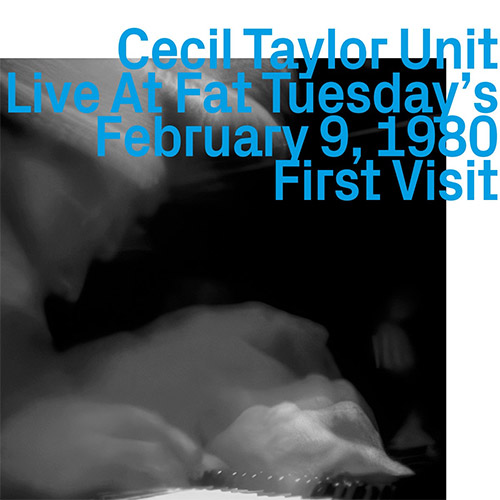
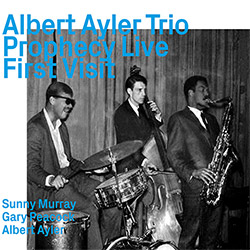
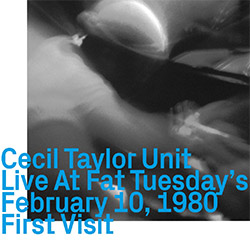

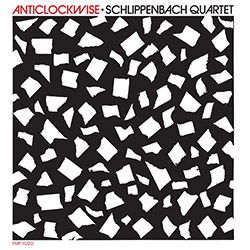
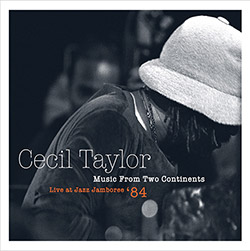
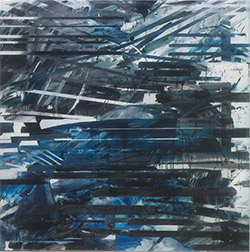
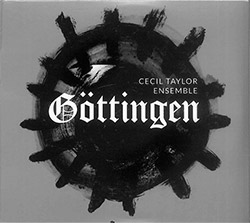
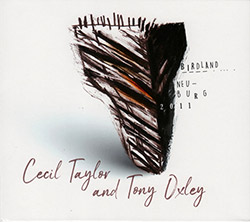
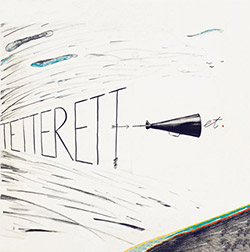
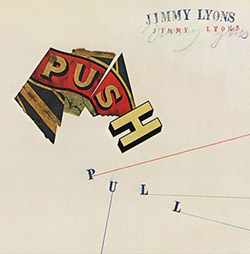
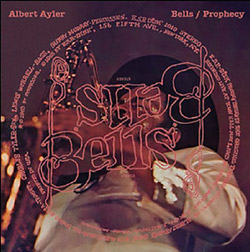
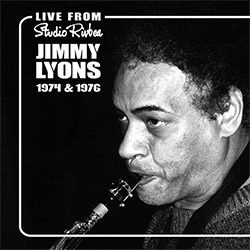
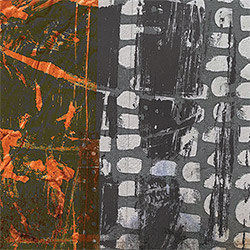
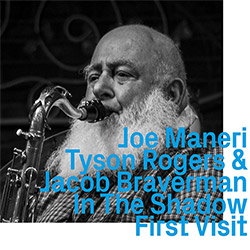
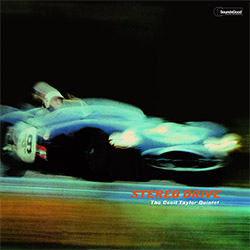
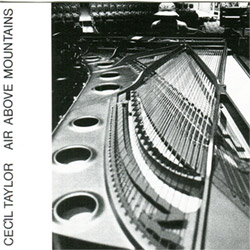
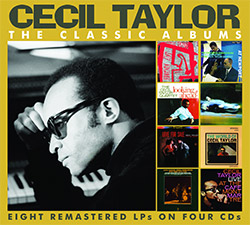
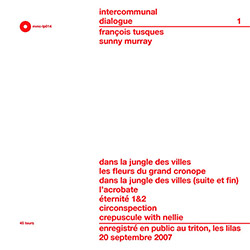
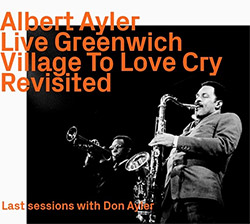
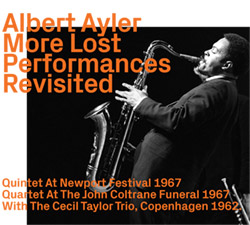
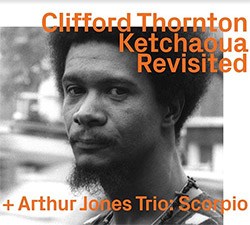
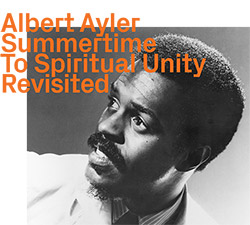
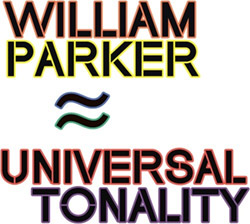
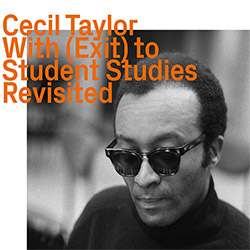
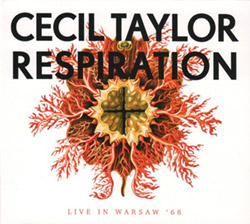
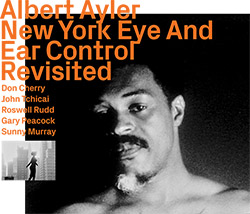

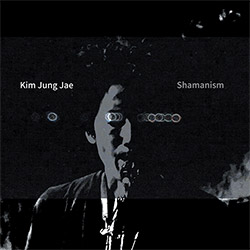
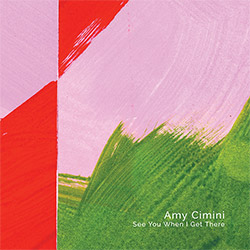
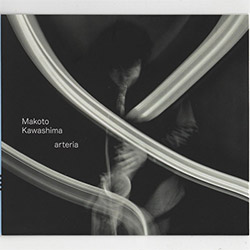
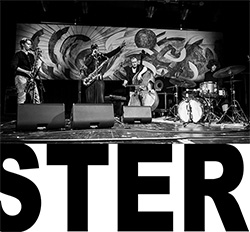
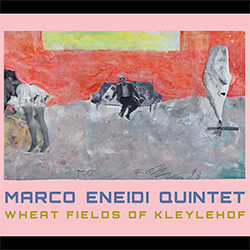
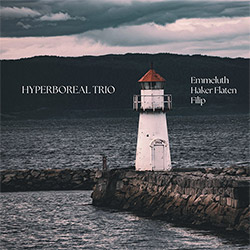
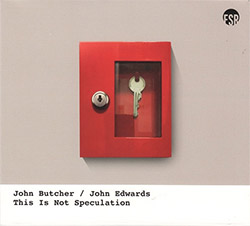
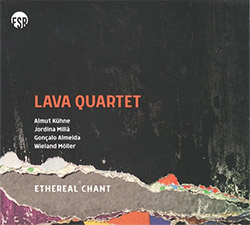
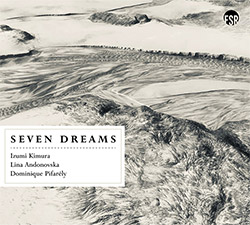
![Deupree, Jerome / Sylvie Courvoisier / Lester St. Louis / Joe Morris: Canyon [2 CDs]](https://www.teuthida.com/productImages/misc4/36404.jpg)

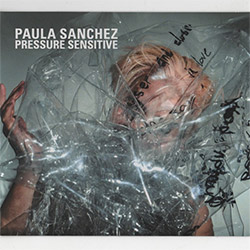
![Eternities: Rides Again [CASSETTE]](https://www.teuthida.com/productImages/misc4/36247.jpg)

![Lopez, Francisco: Untitled (2021-2022) [2 CDs]](https://www.teuthida.com/productImages/misc4/36438.jpg)
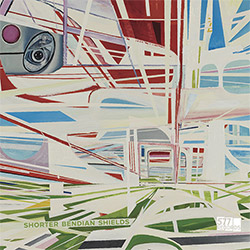


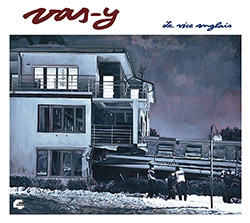
![Eventless Plot | Haarvol: The Subliminal Paths [CASSETTE + DOWNLOAD]](https://www.teuthida.com/productImages/misc4/36232.jpg)
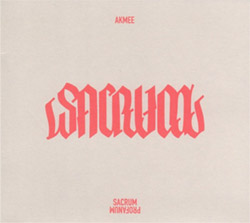




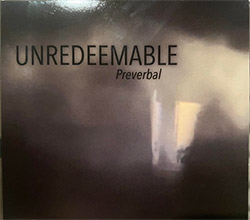
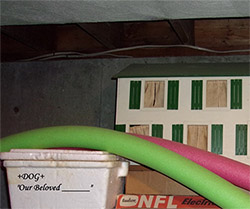
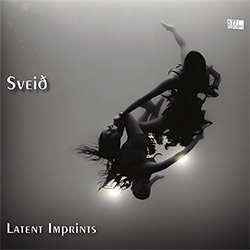
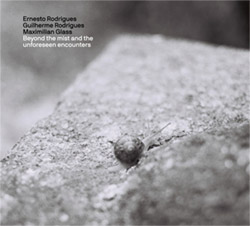
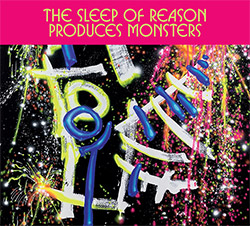
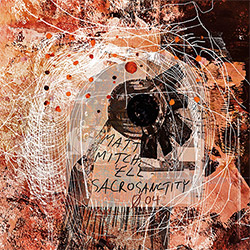
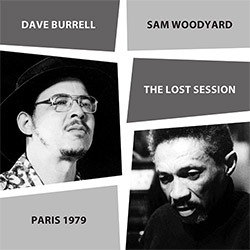
![Eventless Plot | Francesco Covarino: Methexis [CASSETTE + DOWNLOAD]](https://www.teuthida.com/productImages/misc4/36231.jpg)
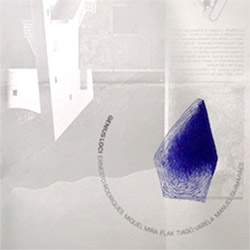
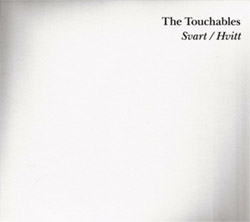
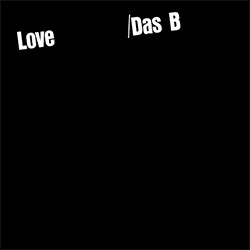
![Das B (Mazen Kerbaj / Mike Majkowski / Magda Mayas / Tony Buck): Love [VINYL]](https://www.teuthida.com/productImages/misc4/36329.jpg)
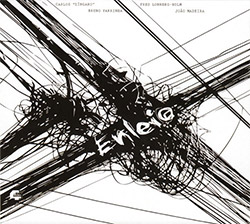
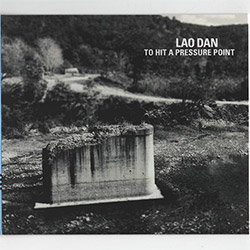
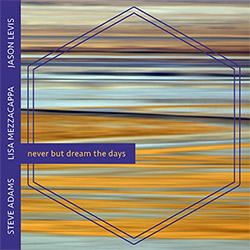
![Hemphill Stringtet, The: Plays the Music of Julius Hemphill [VINYL]](https://www.teuthida.com/productImages/misc4/36409.jpg)
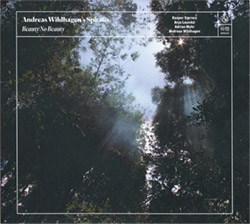
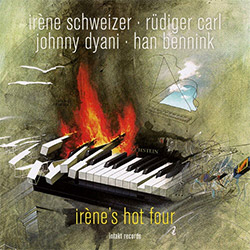
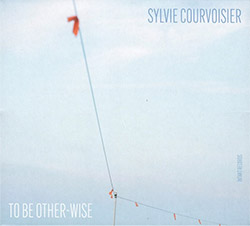
![Halvorson, Mary Septet: Illusionary Sea [2 LPS]](https://www.teuthida.com/productImages/misc4/17952.jpg)
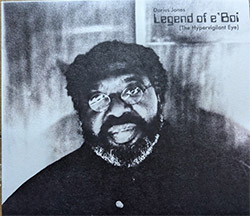
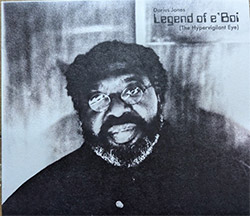
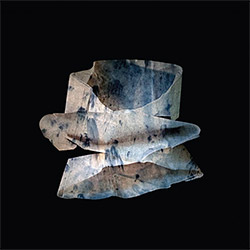
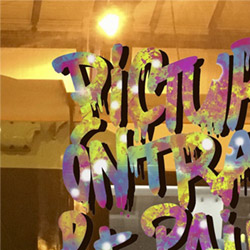
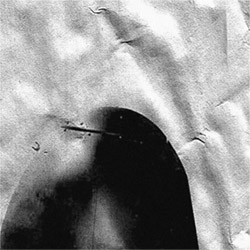
![Money : Money 2 [2 CDs]](https://www.teuthida.com/productImages/misc4/35894.jpg)
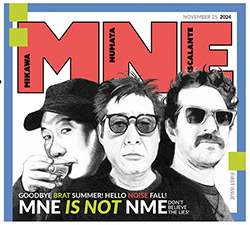

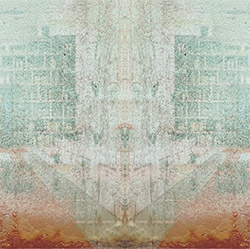
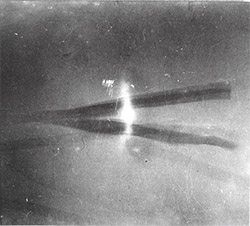
![Klinga, Erik: Elusive Shimmer [VINYL]](https://www.teuthida.com/productImages/misc4/36258.jpg)
![CHANGES TO blind (Phil Zampino): Volume 9 - I Wave on a Fine Vile Mist [CD + DOWNLOAD]](https://www.teuthida.com/productImages/misc4/36061.jpg)

![Wallmart / Rubbish: Asset Protection [split CD]](https://www.teuthida.com/productImages/misc4/35900.jpg)
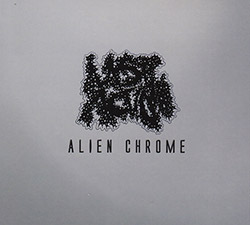
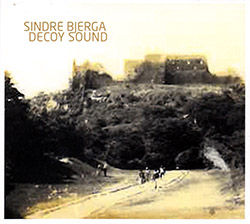
![+Dog+: The Family Music Book Vol. 5 [2 CDs]](https://www.teuthida.com/productImages/misc4/35897.jpg)
![Kuvveti, Deli : Kuslar Soyledi [CASSETTE w/ DOWNLOAD]](https://www.teuthida.com/productImages/misc4/36107.jpg)
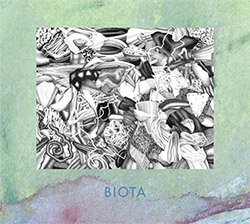
![Nakayama, Tetsuya: Edo Wan [CASSETTE w/ DOWNLOAD]](https://www.teuthida.com/productImages/misc4/36105.jpg)
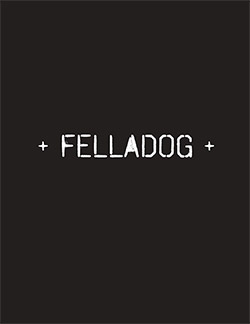
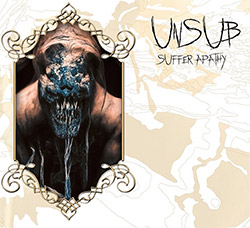
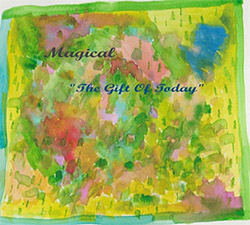
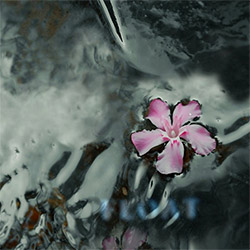
![Yiyuan, Liang / Li Daiguo: Sonic Talismans [VINYL]](https://www.teuthida.com/productImages/misc4/35957.jpg)
![Brown, Dan / Dan Reynolds: Live At The Grange Hall [unauthorized][CASSETTE]](https://www.teuthida.com/productImages/misc4/36245.jpg)


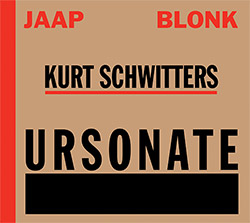
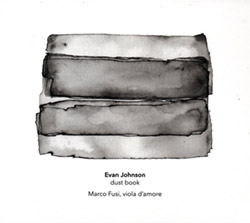
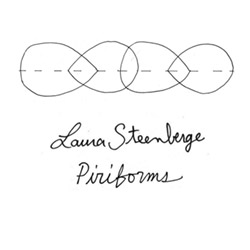
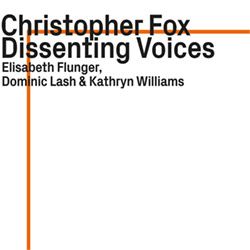

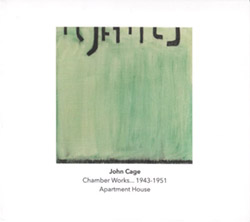
![Palestine, Charlemagne / Seppe Gebruers: Beyondddddd The Notessssss [VINYL]](https://www.teuthida.com/productImages/misc4/36206.jpg)
![Palestine, Charlemagne / Seppe Gebruers: Beyondddddd The Notessssss [NEON GREEN VINYL]](https://www.teuthida.com/productImages/misc4/36207.jpg)
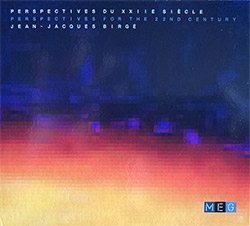
![Laubrock, Ingrid: Purposing The Air [2 CDs]](https://www.teuthida.com/productImages/misc4/35639.jpg)
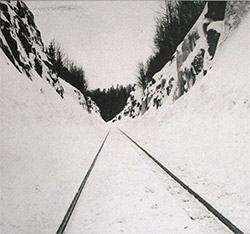
![Yoko, Ono / The Great Learning Orchestra: Selected Recordings From Grapefruit [2 CDs]](https://www.teuthida.com/productImages/misc4/35841.jpg)

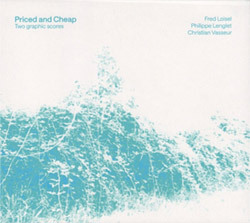
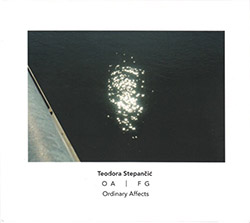
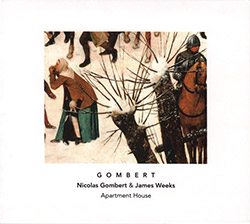

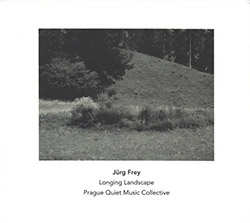
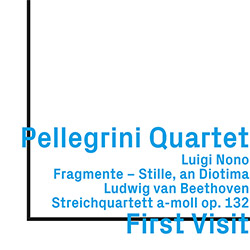

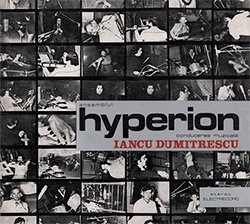
![Zorn, John / JACK Quartet: The Complete String Quartets [2 CDs]](https://www.teuthida.com/productImages/misc4/35609.jpg)
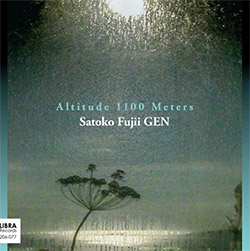
![Lonsdale, Eden: Dawnings [2 CDs]](https://www.teuthida.com/productImages/misc4/35480.jpg)
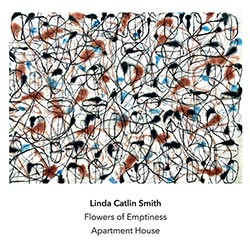
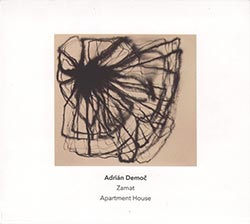

![Sorry For Laughing (G. Whitlow / M. Bates / Dave-Id / E. Ka-Spel): Rain Flowers [2 CDS]](https://www.teuthida.com/productImages/misc4/35985.jpg)

![Rolando, Tommaso / Andy Moor : Biscotti [CASSETTE w/ DOWNLOADS]](https://www.teuthida.com/productImages/misc4/36106.jpg)


![Electric Bird Noise / Derek Roddy: 8-10-22 [CD EP]](https://www.teuthida.com/productImages/misc4/35970.jpg)








![Elephant9 : Mythical River [VINYL]](https://www.teuthida.com/productImages/misc4/34624.jpg)



![Elephant9 with Terje Rypdal: Catching Fire [VINYL 2 LPs]](https://www.teuthida.com/productImages/misc4/35355.jpg)
![Deerlady (Obomsawin, Mali / Magdalena Abrego): Greatest Hits [VINYL]](https://www.teuthida.com/productImages/misc4/34876.jpg)
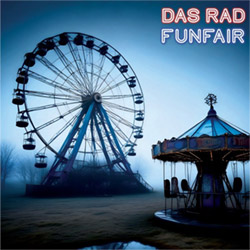
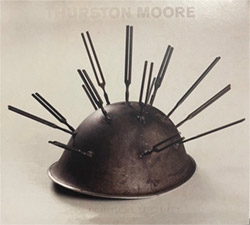
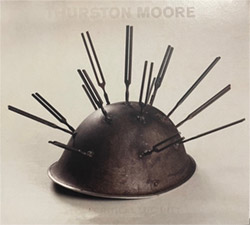
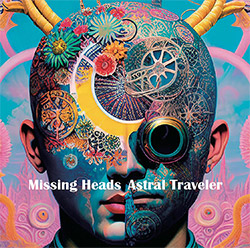
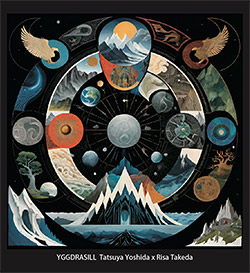
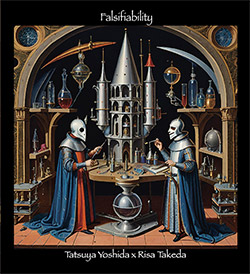
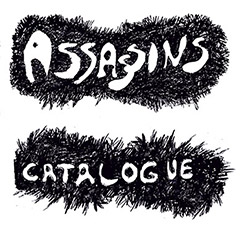
![Surplus 1980: Illusion of Consistency [CD]](https://www.teuthida.com/productImages/misc4/35069.jpg)
![Staiano, Moe: Away Towards the Light [VINYL + DOWNLOAD]](https://www.teuthida.com/productImages/misc4/35037.jpg)
![Coley, Byron: Dating Tips for Touring Bands [VINYL]](https://www.teuthida.com/productImages/misc4/17906.jpg)

![Lost Kisses: My Life is Sad & Funny [DVD]](https://www.teuthida.com/productImages/misc4/lostKissesDVD.jpg)